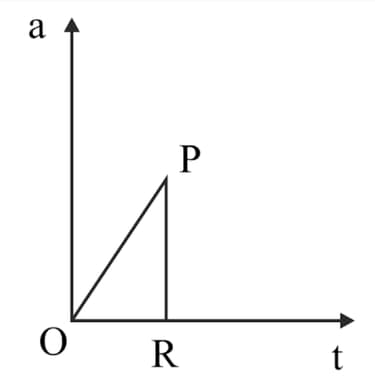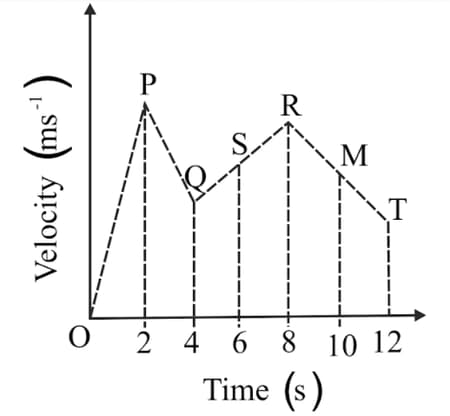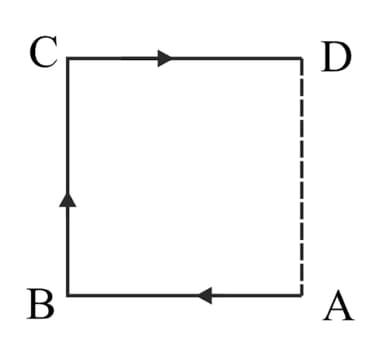Consider the given statements and select the option which correctly identifies the true (T) and false (F) statements.
(i) Distance is the magnitude of displacement in all cases.
(ii) When a body moves with uniform speed, then the average speed is same as instantaneous speed.
(iii) Average speed is greater than the average velocity if a body is moving in a straight line without reversing its direction.
(iv) When a body moves with constant velocity, the average velocity is zero.
| (i) | (ii) | (iii) | (iv) |
| (i) | (ii) | (iii) | (iv) |
| (i) | (ii) | (iii) | (iv) |
| (i) | (ii) | (iii) | (iv) |

Important Questions on Motion
Match the column I with column II and mark the correct option from the codes given below.
| Column | | Column |I | ||
| (a) | (i) | ||
| (b) | (ii) | ||
| (c) | (iii) | ||
| (d) | (iv) |
What would you conclude about the velocity-time graph of the cyclist from the given graph?

Statement : An object thrown vertically up with a velocity reaches the maximum height after seconds. At a time seconds, its velocity becomes zero.
Statement : An object, thrown vertically up with a velocity comes back to its initial position with the same magnitude of velocity but in the opposite direction.
The velocity-time graph of an object is shown in the figure. Identify the correct statement(s) regarding this graph.

i) This is a non-uniform velocity-time graph of the object.
ii) The velocity of the object is increasing at the same rate during OP and QR.
iii) The velocity of the object is decreasing at the same rate during PQ and RT.
A boy takes to reach each point from A to B, B to C and C to D as shown in the diagram. If , then which of the following is correct when the body reaches D from A through BC?

Two racing cars of masses are moving in circles of radii respectively. Their speeds are such that each makes a complete circle in the same length of time . The ratio of angular speed of the first car to the second car is :
